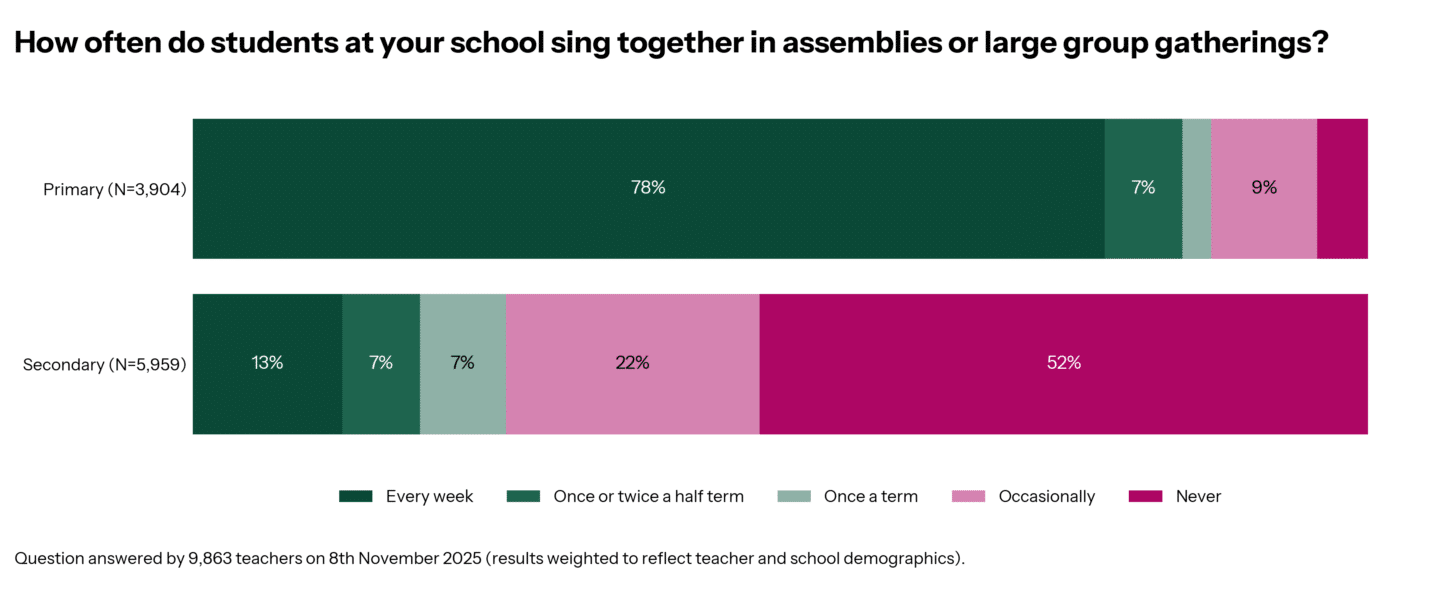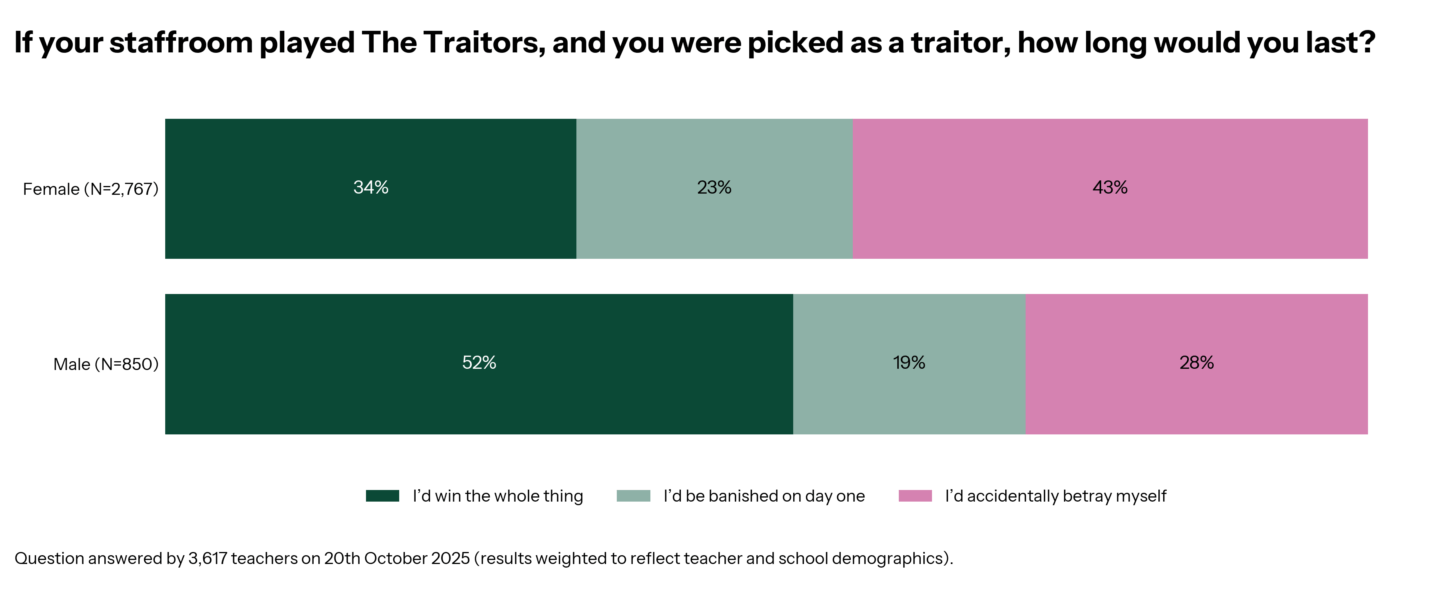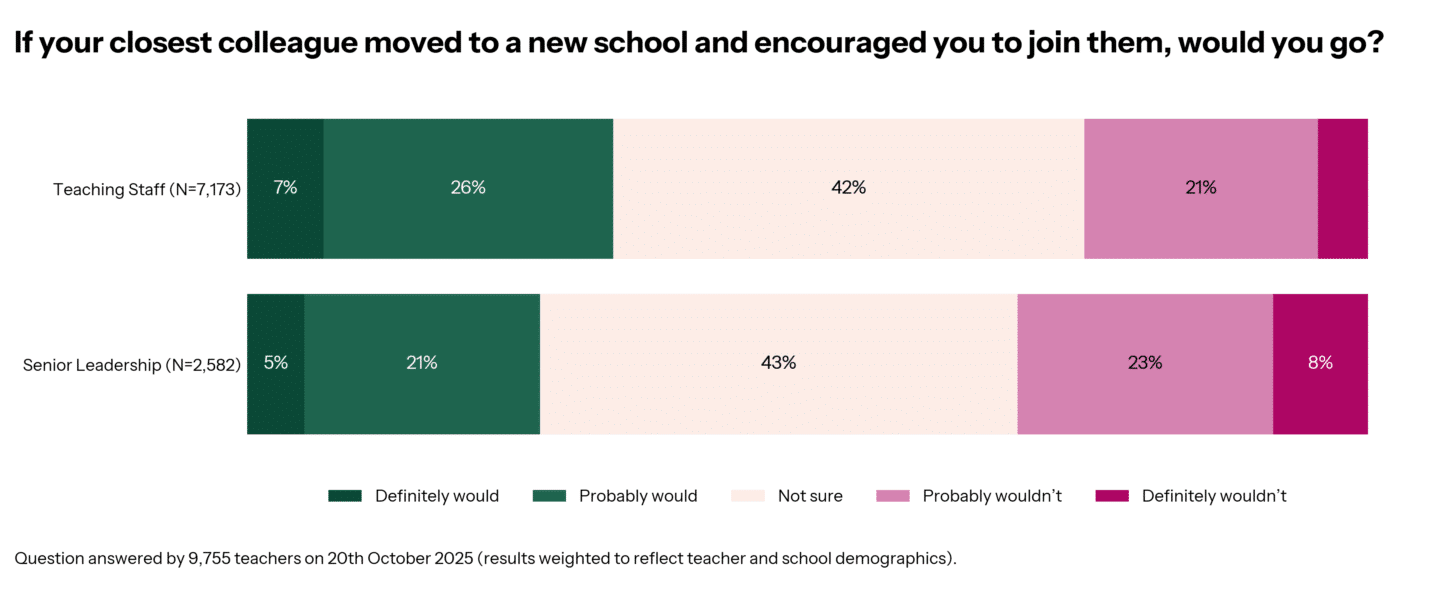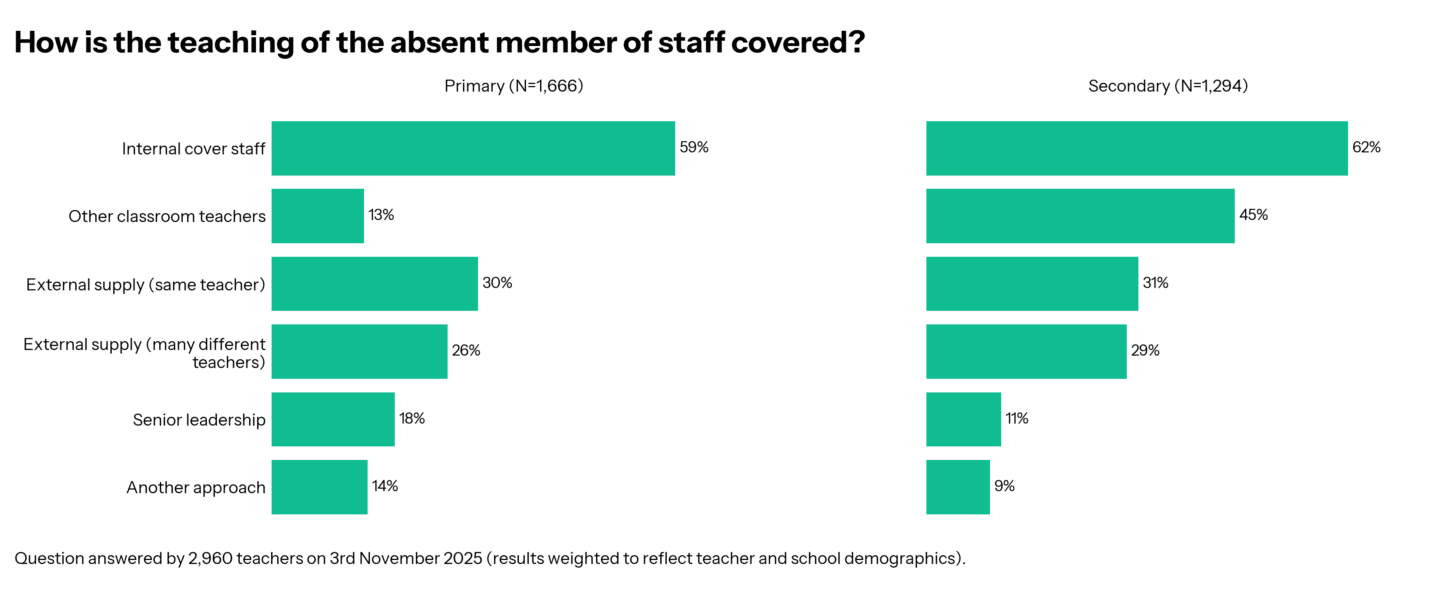Hello Teacher Tappers!
Everyone is back at it after half-term, and the countdown for Christmas has officially begun in many classrooms! Judging by the socials, plans are already underway for concerts, craft sessions and, of course, the nativity. Look out for questions about your Christmas prep over the next few weeks…
You pick the winners
This month, it’s you, the Teacher Tappers, choosing the winners of our prizes! We have Teacher Tapp Star Boxes crammed with Teacher Tapp goodies, and we are calling for nominations for who to send them to! Fill in this form, and tell us why your friend (or even you!) loves Teacher Tapp for a chance to receive some special post. But be quick! The form will close on the 30th of November. You can read the Ts and Cs here.
Sing up!
Did you know that according to the international comparison survey, PISA, that music and arts provision in England’s schools is considerably higher than most OECD countries. 93% of pupils in England attended schools where the headteacher reported that music was offered, compared to the OECD average of 57%. Not only that, but entries to music GCSE were up in 2025, for the second year in a row.
But let’s dig into the detail here – and focus at just choirs and singing in schools. Choirs are common across both phases (73% primary and 68% secondary), but secondaries are more likely to have multiple choirs (34% vs 16%).
How does that translate to group singing?
Primary teachers are much more likely than secondary teachers to sing every week (78% vs 13%) and secondary are significantly more likely to report students ‘never’ sing (52% vs 4% primary).

The state and private divide
However, this isn’t the full story:
When breaking down the results into state and private, the numbers are very similar in primary, but in secondary, the picture totally alters:
- State secondaries: only 8% report weekly singing, while over half (57%) say students never sing together.
- Private secondaries: Far more singing – 45% say students sing weekly, though 13% still say never.

What is happening here? Although singing appears to remain a core part of primary school culture (regardless of whether the school is state or private), but tends to fade in state secondaries, whereas private secondaries, by contrast, seem to maintain singing traditions into the secondary years. This could be due to the religious character of many private schools where singing is part of worship.
Primary bangers – teachers top choices
Top ten modern songs
- Power in Me
- My Lighthouse
- Cauliflowers Fluffy
- Autumn Days
- Spring Chicken
- Count on Me – Bruno Mars
- This Is Me – The Greatest Showman
- Try Everything – Shakira
- Firework – Katy Perry
- Unwritten – Natasha Bedingfield
Top ten hymns
- Shine Jesus Shine
- Lord of the Dance
- Give Me Oil in My Lamp
- All Things Bright and Beautiful
- Here I Am, Lord
- Amazing Grace
- He’s Got the Whole World in His Hands
- One More Step Along the World I Go
- Be Still
- The Lord’s My Shepherd
Over in secondaries, picking favourite entrance music wasn’t quite as straightforward – and in fact a large number of teachers said their schools don’t use music at all for assemblies. Tappers told us “we don’t have music”, or that students “enter in silence”, and out of 809 answers, these negative responses appeared over 20%.
However, in schools where they do play music as students enter, choices were varied – but the top ten were:
- Proud – Heather Small / M People
- Shine Jesus Shine
- My Lighthouse
- Eye of the Tiger – Survivor
- Hall of Fame – The Script
- Jerusalem
- Happy – Pharrell Williams
- The Imperial March – Star Wars
- Unwritten – Natasha Bedingfield
- Lord of the Dance
Teacher traitors
From popular music to popular culture!
Spotting liars is a skillset teachers feel they have (either that, or their students are very poor at fibbing!). 95% of primary and 92% of secondary agree they are good at being able to tell when students are lying.
The Traitors finale was broadcast last week – and we wondered if those skills in spotting liars would come in useful if the staffroom was transported to the castle…
We split the panel and asked half of Tappers to predict their outcomes if they played the game as faithfuls, and as traitors.
Teachers on a whole were more confident in their chances of winning if they were a traitor than a faithful (39% vs 28%). However – when we split the results by male/female…things change!
Male teachers are much more confident than female teachers in their ability to win (52% vs 34%).

From loyalty to the faithful, to loyalty to their school, this week we also asked about inclination to move schools if a close colleague left and asked you to join them.
About 4% reported not having a close colleague at work, so excluding this group, a deep dive into the results revealed teaching staff to be more inclined than senior leaders to follow friends into new roles (33% vs 26% definitely or probably would).

Sick staff
A Teacher Tapper wrote in to ask if there could be a question on staff sickness, and how it is covered.
In secondary schools, we asked about absence in departments or faculties, and in primary about the whole school.
22% of secondary teachers reported a colleague who is signed off from work in their department, and 50% of primary teachers reported a colleague signed off in their school.
In primary and secondary settings, teachers reported internal staff as the most common method of cover (59% vs 62%), but in secondaries, the responsibility is much more likely to be pushed onto other classroom teachers (45% vs 13%).

A closer look at the data shows that covering staff who are signed off is more common in schools with higher proportions of pupils eligible for free school meals (FSM). This pattern appears in both primary (27% vs 20%) and secondary schools (57% vs 46%), suggesting that schools in more disadvantaged areas face greater staffing pressures.
Differences also emerge in how schools manage cover. Teachers in more affluent areas are more likely to say their school uses the same external supply teacher rather than multiple supply teachers (32% vs 26% ). In contrast, teachers in schools in more challenging contexts are just as likely to say they use multiple cover teachers as they are to use a single cover teacher (29% vs 28%), reflecting the greater instability and limited availability of regular cover staff for these settings.
+ BONUS the prevalence of the PTA
It’s a group that can take on roles like volunteering in class, fundraising, running social events – but how many schools have a PTA of Friends of the School group?
- 77% of primary and 52% of secondary schools have a PTA or similar group.
- However, this varies significantly depending on the school’s community and levels of deprivation.
- In primary schools, teachers in the most affluent areas are more than twice as likely to have a PTA compared to those in the most deprived (93% vs 44%).
- In secondary schools, the gap is even wider — teachers in affluent areas are over four times as likely to report having a PTA (61% vs 14%).
Daily Reads
It was the details of the pay deal that got Tappers clicking and reading this week! This blog explaining the offer was read by 16% of Teacher Tappers! Woah!
Got a blog you think we should feature? Email us at england@teachertapp.co.uk and we will check it out!





